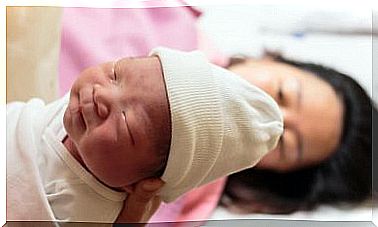Educational Priming: What Is It?

Have you heard of the concept of ” educational priming “? This term can be found in the field of developmental and educational psychology . If we implement it in the classroom, we can achieve important changes in the behavior of children.
The priming education helps reinforce positive behavior through implementation strategies . These will not only manage to modify the behavior in a student, but we will achieve it with the whole class. In the following lines we are going to see what it consists of and how we can put it into practice so that it is effective.
What is educational priming?
The works of Thorndike and Skinner, in which they carried out experiments with cats, were reflected in the book of Educational Psychology. There they mention educational priming as one of the processes in learning that are carried out by operant conditioning .

The experiment consisted of enclosing the cats in boxes that had a handle and that, to get to the food, they had to operate it. Cats did manage to turn the crank, but they always did it by chance, never on purpose. However, when this situation was repeated several times, the cats operated the crank as they had accidentally learned from the previous times.
What was the conclusion they reached? Any action that causes a rewarding effect in a certain situation will cause that action to be repeated in a similar situation. Therefore, we can define educational priming as ” the responses of a person in a given situation are going to be influenced by the stimuli that are around them and unconsciously, hardly realizing that those responses have been handled.”
How to use educational priming?
Since we know how educational priming works , we can help ourselves with some resources that can be carried out in class or at home , regardless of the number of children there are.
As we have seen before, educational priming happens in such a way unnoticed that learning usually happens accidentally, without our barely realizing it. Let’s see what we can do to achieve this effect.
Identify a behavior to reinforce it
The first thing we have to do for the educational priming to work is to identify the behavior on which we want to intervene and fixate on it until we achieve the behavior we want to occur.
To achieve this, we need them, unconsciously and accidentally, to be able to perform the behavior that we want them to carry out.
Elicit a positive response
Once we have identified the behavior, what we have to achieve is that, unconsciously, they get to obtain the result that we seek in their behavior.
An example using these two resources
We want students to not drag their chairs every time they sit down or get up from them , causing a rumble throughout the class. This would be the identified behavior. Therefore, what we have to do is that, unconsciously, they manage to do it. How can we get them to not drag the chair no matter how much they want to?
We can put a rubber plug for chairs at the end of each leg , (provoke a positive response) so that, that way, they do not make noise. What we are trying to achieve is that this act does not occur. This, in the end, will end up causing children to move more carefully and make less noise.
We can use this resource both in class with children of different ages, and at home with our children; the only thing we have to take into account is to accidentally provoke the behavior we want , to make it repeat itself over time.
Types of educational priming
We can identify several types of educational priming .
Perceptual and conceptual priming
It is related to the perception of a stimulus and how it can produce the response . For example, if we are continuously reading the word strawberry in a text , if later they ask us what fruit we want, we would probably choose strawberry, unless we don’t like it. We would be conditioned by that stimulus that we have had by repeatedly reading that word.
The priming conceptual has more to do with our thoughts and associative side . If they ask us a word that is associated with a chair , we can think of a table because both are furniture.
Semantic priming
This has to do with the association of some words with others that, although they do not share meaning, they do have a semantic relationship. For example, we can associate pink with daisy.

The priming education by repetition
This type of priming consists of obtaining the response of the person to stimuli due to repetition.
The priming for kindness
The priming of kindness occurs when someone receives an act of generosity or kindness to him and, from this, can respond in the same way, with generous acts towards others. A generous and sincere act will always provoke another act like it.
As you have seen, the effect of educational priming can be a great resource to provoke positive behaviors in others in a way that they do not realize , that is, to achieve it accidentally. This can be used both at school, in the institute and at home to get children to carry out positive behaviors without realizing it.
Why don’t you try to put it into practice? You do not lose anything by trying and it will surely end up surprising you for good.










